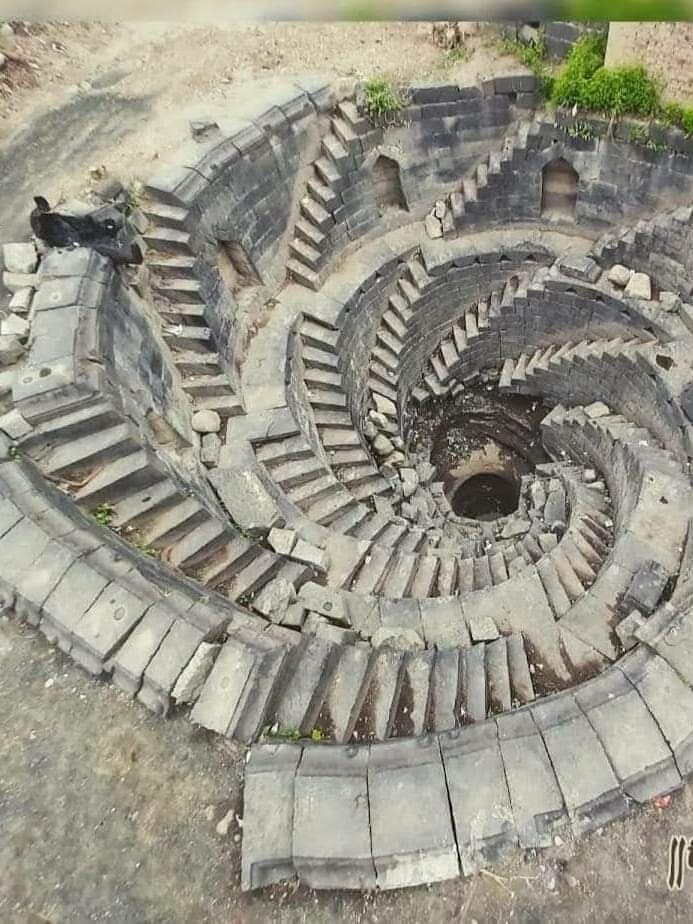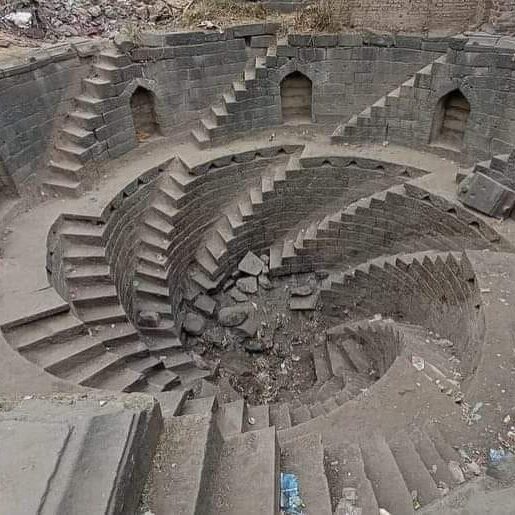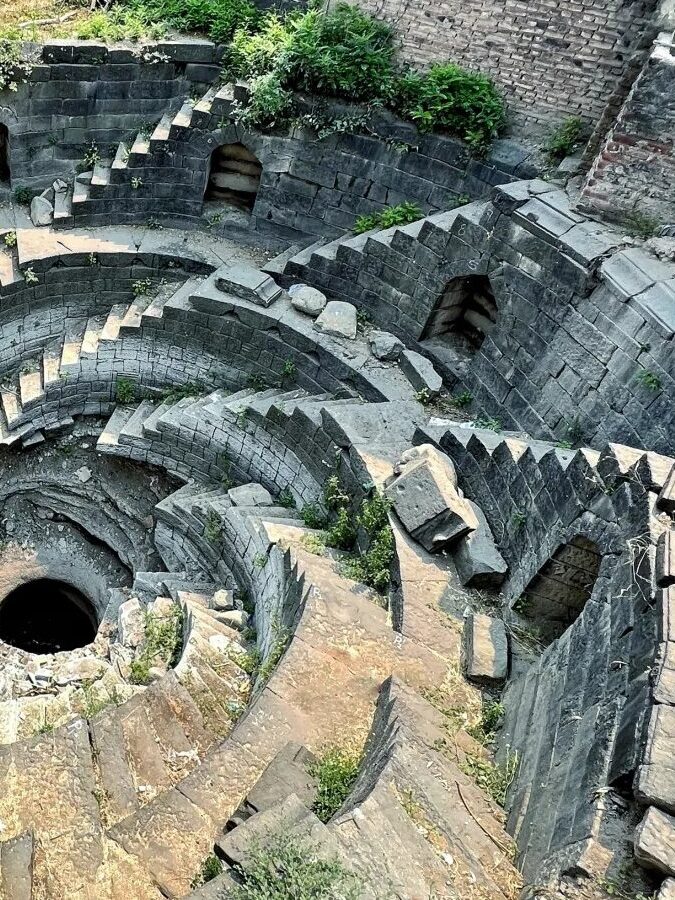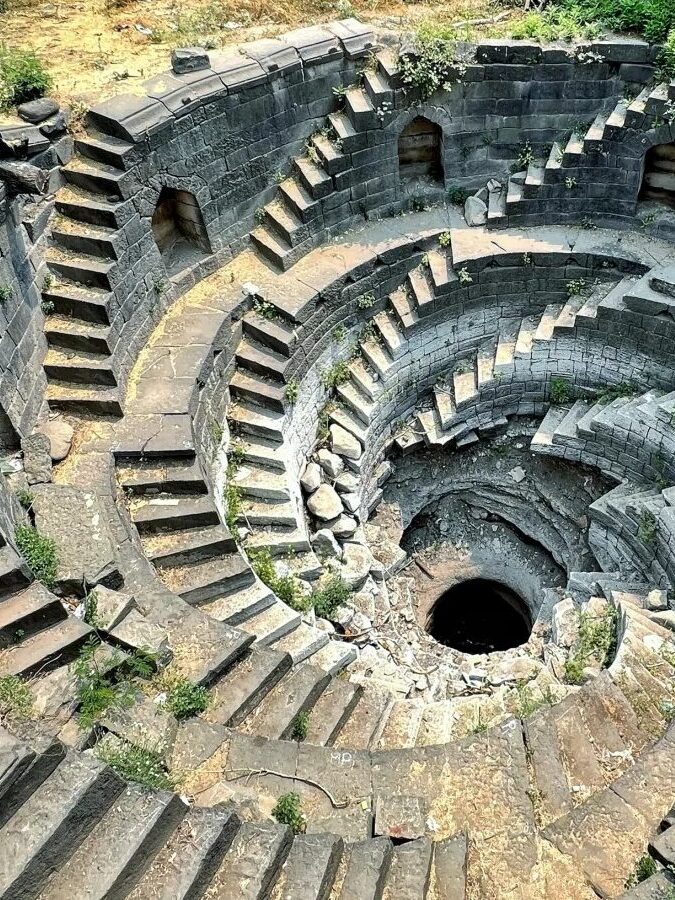Stepwells, or baoris, are ancient wells that were built in large numbers in various parts of India. They were particularly popular in arid regions where water was scarce. These wells have a unique design that features a staircase leading down to the water level. The stepwells were not only functional but also served as a place for social gatherings and religious ceremonies. One such example is the Helical Stepwell with eight entries in Walur Village, Selu Taluka in Parbhani, Maharashtra.

The Helical Stepwell with eight entries was built over 1000 years ago during the Adil Shahi era. The Adil Shahi sultans ruled over a vast empire that included parts of southern India and were known for their patronage of the arts and for building beautiful structures. The well at Walur Village is one such example of their artistic and engineering prowess.
The well is located in a small rural village surrounded by fields of wheat, soybeans and cotton. The well is 20 meters in diameter and over 20 meters deep. The uniqueness of this well lies in its eight entrances, which are strategically placed at the eight cardinal directions. The steps that lead down to the well are wide and shallow, making it easier for people to walk up and down. These steps are also symmetrical, which adds to the aesthetic appeal of the well.

The well’s design allows for water to be accessed at various levels, depending on the water table, and it takes advantage of the area’s high rainfall to collect water all year round. The eight entries were also designed to allow for easy access to water by multiple communities that were living in the area at the time. The Helical Stepwell with eight entries was not just a source of water, but it was also a symbol of community and social cohesion.

What makes this well unique is its helical shape and its intricate architectural design. The well is built in a clockwise helix shape, starting from the outermost ring and spiraling into the center. The walls of the well are adorned with intricately carved motifs and patterns that make it a sight to behold. The intricate design of the well is representative of the Adil Shahi era, which was known for its unique blend of Hindu and Muslim architecture.

Visitors to the well are often overwhelmed by the enormity and beauty of the structure. They marvel at the well’s ingenuity and its ability to provide a vital resource to the community for centuries. Local residents are proud of their heritage and are happy to share their history and traditions with visitors to the area.

